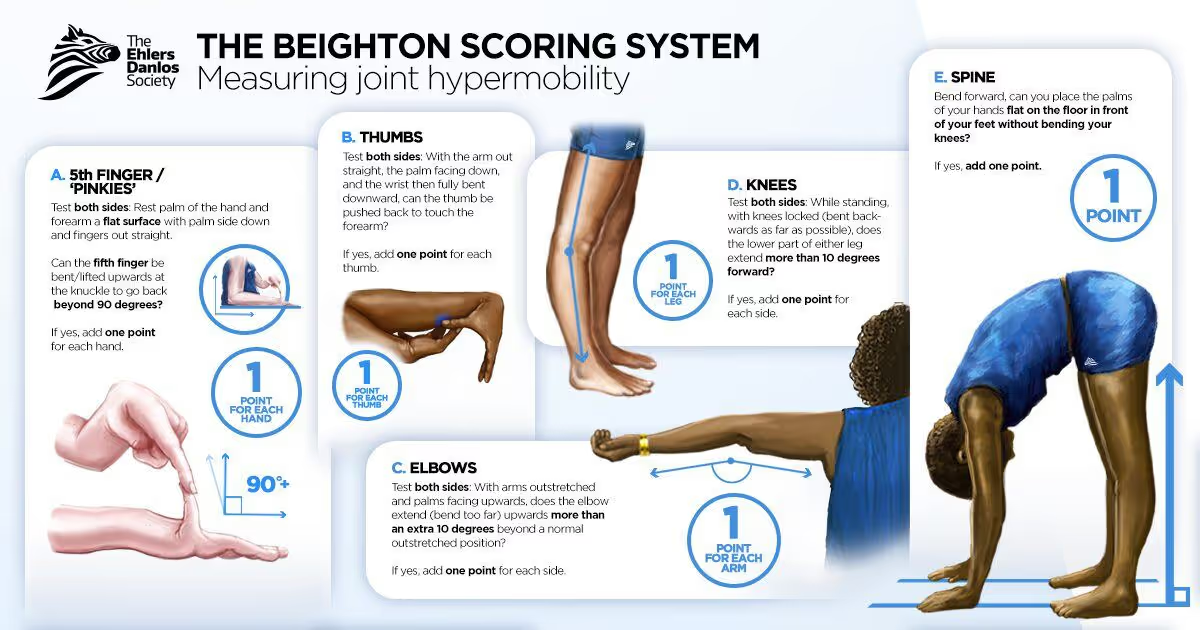The Hypermobile Athlete
In the world of athletics, flexibility is often viewed as something that you can never have enough of, as having greater flexibility can facilitate movements that others find difficult or impossible. For athletes, having a lot of flexibility can actually be harmful. Hypermobility, also referred to as being double-jointed, is extremely common in athletes. While being hypermobile is not an injury in itself, it may lead to one. Hypermobile athletes have an excessive amount of joint motion which often exceeds normal end ranges of motion. While this may seem advantageous at first glance, navigating workouts and training regimens for these individuals comes with its own set of challenges and considerations as joints may exceed their normal range of motion, leading to instability. This means that the tissues surrounding hypermobile joints can be placed in excessively stretched positions as the joint tries to find a stable position. Over time, this excessive tissue laxity (looseness) can lead to injury. Hypermobility can exist on its own or can be comorbid with other disorders such as hypermobile Ehlers Danlos Syndrome or hEDS.
Signs of Hypermobility:
- Having a high score on the Beighton Scale used to measure hypermobility. Pictured below is the Beighton Scale with instructions courtesy of the The Ehlers Danlos Society.
- Sitting cross legged or feeling the need to support your limbs
- Frequent elf manipulating (frequently feeling the need to “crack” your joints)
- Frequently feeling as though your joints are “giving out” on you
- Excessive skin softness and stretchiness, easily bruising
- Frequent joint dislocations, subluxations and sprains
Challenges and Risks Associated with Hypermobility:
- Risk of Hyperextension: Hypermobile athletes are more prone to overextending their joints, leading to strains, sprains, and even dislocations. Because of these risks, a cautious approach should be taken with exercises that involve extreme ranges of motion.
- Difficulty in Achieving Stability: While mobility is abundant in those with hypermobility, stability may be lacking. Those with excessive joint mobility often tend to rely on the ligaments and tendons surrounding their hypermobile joints for stability as the stability is not provided by their joints or muscles. This can make it challenging to maintain proper form during exercises, thus increasing the risk of injury.
- Increased Pain: Because of the excessive reliance on the connective tissues surrounding hypermobile joints, those with hypermobility often experience increased pain. Ligaments, tendons and muscles are highly innervated by nerves. These nerves can trigger the nervous system to interpret pain as the surrounding tissues are being stretched to their limit.
Common Movement Faults for Athletes:
- Hyperextending the elbows when lifting overhead
- Hyperextending the knees when running
- Hyperextending the lower back when squatting or deadlifting or hyperflexing the lower back in the bottom of a squat
- Hyperextending the neck during sport related movements (can be seen in lifters, gymnasts, field sports and more)
One thing we can do to place joints in a more stable position is avoid fully locking them out. When someone with hypermobility fully locks their joints, they are resting on the surrounding ligaments and connective tissues for stability rather than using the surrounding musculature for stability. Positioning is key, you can be hypermobile and still find stable positions. Below are photo examples of me with my joints fully locked out versus in a fully extended position without full lockout. This is imperative for longevity in sport for hypermobile athletes such as overhead lifters with hypermobile elbows or runners with knees that hyperextend.
For hypermobile athletes, the path to optimal performance and injury prevention is paved with mindful movement, strategic training, and a deep understanding of their unique physiological makeup. While hypermobility presents its share of challenges, with the right approach and guidance, these athletes can unlock their full potential while safeguarding their joint health for years to come. By embracing a balanced approach to training and respecting the limits of their flexibility, hypermobile athletes can navigate their workouts with confidence and resilience. In the next blog we will discuss methods for building stability in the hypermobile athlete.
If you are a hypermobile athlete who is struggling with positioning, book a free discovery call with us today! We will help you find stable positions and avoid placing excessive stress on your connective tissues!
Dr. Kylie Miller
Performance Physical Therapist
Wilmington, NC
Follow here for more performance tips: @conquermovementpt

